There’s nothing like fresh, organic produce to cook healthy and sumptuous meals in your home. Sure, you could always go to the market and get your pick of veggies, but the thrill and satisfaction of putting effort into a house project is something that makes the idea of having a kitchen garden in your home far more interesting. And not to forget, it saves you a lot of money when you design a kitchen garden.
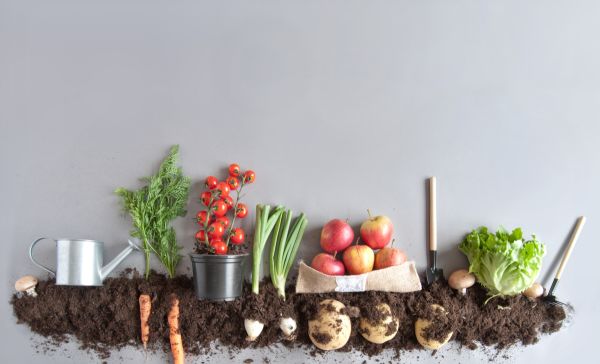
Things we covered for you
Choose your favorite seasonal vegetables for a quality kitchen garden. Grow small batches, emphasizing diversity over quantity in your small kitchen garden ideas. Elevate your home with greenery during the work-from-home era. Opt for space-efficient herbs for fresh salads and garnishes. Involve kids for a nature connection and a healthier, sustainable lifestyle.
What is a Kitchen Garden?
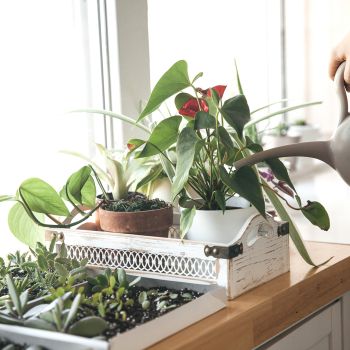
If you are wondering, it is not a garden grown in the kitchen. However, it is a dedicated garden space in the home that is cultivated for the kitchen. Here, you can grow vegetables, fruits and herbs for your daily consumption, but it is nothing like a farm. The kitchen garden at home is usually small-sized, somewhere between 20 to 200 square feet, depending on the area you can spare in your backyard, balcony or terrace. You can customise your kitchen garden to grow preferred seasonal vegetables/fruits/herbs that you usually consume and design it to add a renaissance feel to your house.
Read: Indian Kitchen Garden Plants You Can Grow Right Now
The first step to starting a kitchen garden is to look for sunlight. You can also place a couple of pots on your kitchen windowsill but most people find it difficult with a pre-existing lack of space. In that case, you can go for hanging pots. Usually, the purpose of keeping a nutritious kitchen garden is to improve the kind of food you eat. Kitchen gardening becomes more of a ritual once you start growing your produce and get used to the whole farm-to-table thing. Regularly tending to your garden space will also keep you physically active and help clean the air around you
Kitchen Garden Ideas – A Beginner’s Guide
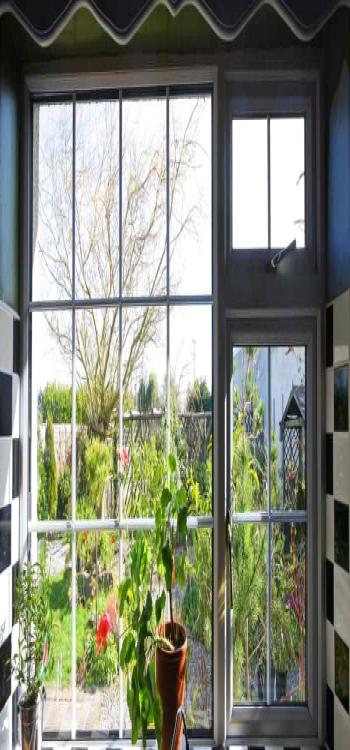
Home kitchen gardens are easy to maintain if you know the right tricks and hacks. Listed below is a beginner’s guide to help you with your new hobby.
Division for a Potager’s Garden
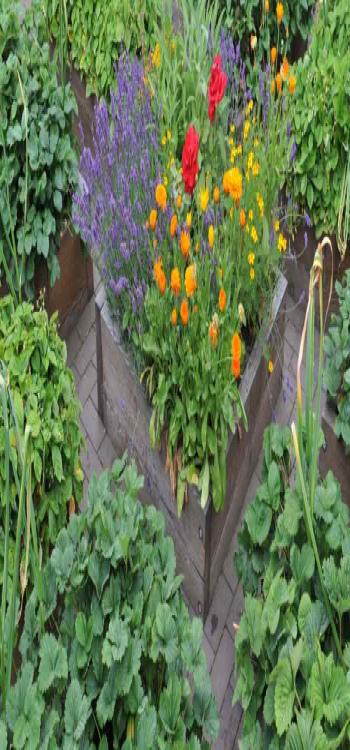
If you prefer a typical vegetable plot, go for a clean, well-organised design with raised beds and paved roads. A ‘potager’ is a formal style of dress. Divide the space into four sections, ideally with walks and a tiny, round central bed if space allows.
Entrance

One of the best things about gardening in a small space is that you can grow plants vertically as well as horizontally, and you can use these gadgets to separate your simple kitchen garden ideas from the rest of your room.
Pots can be set on ladders or stairs, and planters and shelves can be mounted to the wall. Hanging pots from a window box can easily quadruple the amount of the kitchen garden area.
Containers for planters

If you’re short on room, keep in mind that most vegetables thrive in containers that you can move around to fill in the gaps. Raised beds or huge planters are one of the simplest ways to cultivate vegetables in a container kitchen garden. Use them as little vegetable gardens to raise your own vegetables all year.
Read: Back to Office after the Lockdown? Here’s How to Stay Safe
Good Looking Crops

Easy-to-grow vegetables with Instagram appeal win a double thumbs up. In addition to the kitchen plot, you can grow them among flowers or in containers as a stand-alone feature.
Swiss chard’s magnificent ruby red and golden stems are so attractive that it’s frequently planted as ornamental plants. It’s also the greatest type for flavour, as well as providing a consistent supply of leaves all year.
Beetroot is another attractive plant with red-veined leaves that can be eaten in addition to the globes and requires minimal work to grow.
Ripe strawberries, lustrous tomatoes, peas in pods, and gorgeous herbs are all must-haves.
Easy Leaves

‘Cut and come again,’ they say. Salad leaves can be cultivated all year to provide a steady supply, with spicy Japanese mizuna, which has serrated green and purple leaves, mild mustard greens, and crinkly rocket at the top of the list.
Sow in the spring and again in the autumn for two to three months of leaves, effectively eliminating the need for the bagged variety. During the summer, red-veined sorrel and lettuce leaves (rather than ‘heads’) are also wonderful choices.
Read: 5 Signs You Need to Hire A Professional Cleaner
What can you grow in the Kitchen Garden?
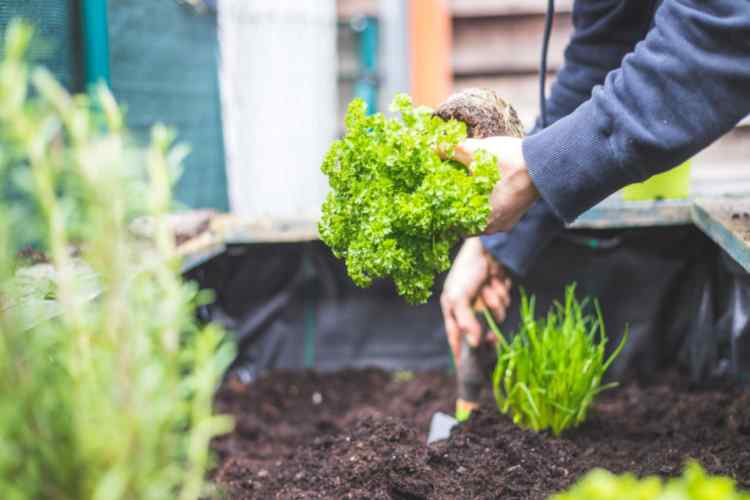
- Herbs are a low-maintenance method to get started in a small kitchen. They’re easy to grow, and some varieties, like rosemary, sage, and mint, have pleasant scents. A variety of plants, such as our fresh herb bundle, will appeal to all tastes while also adding a variety of intriguing shapes, colours, and scents to the space. These are one of the best examples of kitchen garden products.
- Many fruits and vegetables, such as beets, carrots, tomatoes, peas, and runner beans, thrive in pots.
- When planted in light, loose, well-drained soil, potatoes are also quite flexible and happy to be planted anywhere in the sun. Porous fabric planters, such as the one included in our potato growing kit, are ideal for them.
How do you design a kitchen garden?
- Choose the best location for your pots. Plants and seasons may have different lighting requirements. Most kitchen garden plants, on the other hand, require at least 3-6 hours of daily sunlight. It’s also crucial to have a comfortable temperature and excellent air circulation.
- Look for little spots with direct sunshine, such as windowsills, spaces atop the sink, or corners that you don’t use. Remember to rotate your plant in the sun every few days to ensure that it grows evenly.
Types of Garden
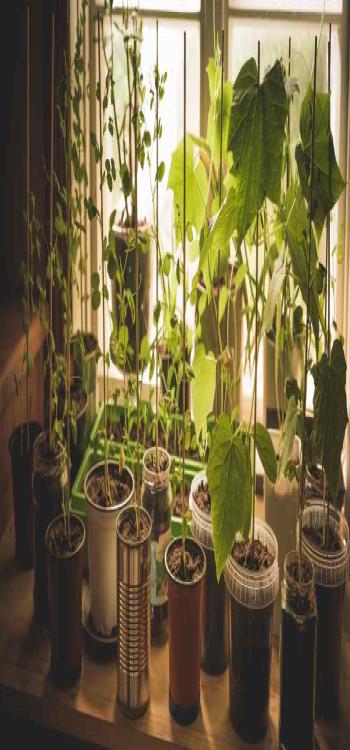
Kitchen garden model images help you envision your plans.
Read: Types of Solar Panels: Which One is Right for You?
Basic Garden
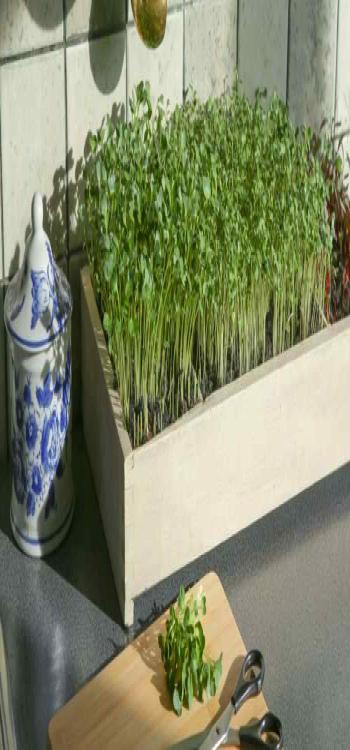
There are no supporting structures such as sheds, storage rooms, or glasshouses in this form of the kitchen garden. It is close to the homestead and provides shelter from the elements, birds, animals, and even people. It has fertile land and access to adjacent streams, rivers, pools, and springs for water. Hedges, modest stone walls, and wooden or reed palings, for example, give security.
Cottage Kitchen Garden
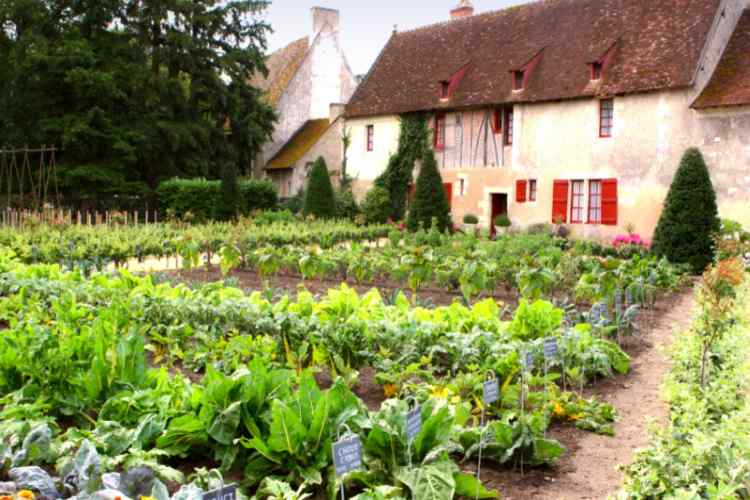
This kitchen garden is a hybrid of the “simple” kitchen garden and the much larger, more elegant walled kitchen garden. The residents of the country built their kitchen gardens immediately around the cottage. It yields adequate food for a family as well as a surplus that may be stored or saved for the winter.
Potager Garden
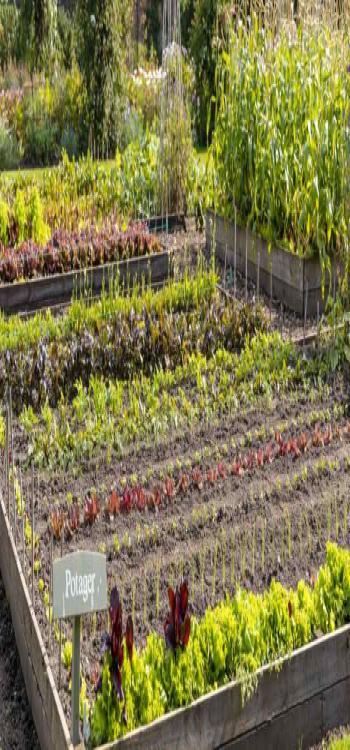
These gardens serve both aesthetic and practical purposes. In French, “potager” simply means “kitchen garden.” The “potager” is ideal for a cottage garden, but it can also be considerably larger, as seen in the beautiful walled kitchen gardens. With its vast variety of trained fruit trees, flowers, vegetables, and shaded paths lined with herbs, the “potager” was inspired by Renaissance gardens. There were many gazebos, fountains, urns, statues, and vines in these gardens.
Allotment Garden
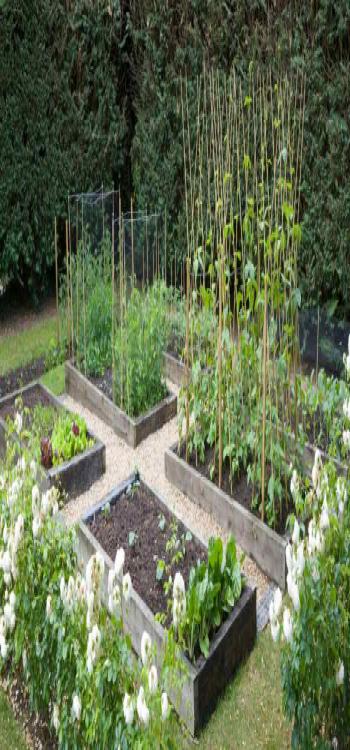
The allotment system arose on the edges of towns in the early nineteenth century. Allotments were created to provide city inhabitants with a healthful activity. The allotments were supplied by municipalities, wealthy donors, and speculators. Sheds, cottages, and summer houses were built on the allotments and are still in use today.
Different Kitchen Garden Ideas You Can Get Inspiration From
Raised Bed Kitchen Garden Ideas
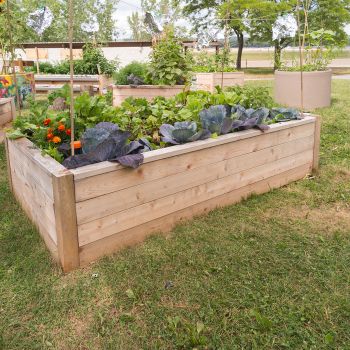
Raised bed kitchen garden layout is an ideal way to proceed if you are planning to set up a kitchen garden in your backyard or don’t have access to the most fertile soil. Here, you can simply place planters at a certain height from the ground and then fill them up with the fertile soil appropriate for vegetable gardening. For such a type of kitchen garden, you will need a frame that encloses all the soil. It can either be made of wood, bricks, stones, hay or any other refurbished material in your home. You can customise the size according to your needs but usually, the raised beds are 6 to 8 feet long, 3 to 6 feet wide, and 6 to 8 inches high. Lush green foliage planted in several raised beds will also add to the look of your garden. You can also use trellis and plant vines on it to impart a proper greenhouse look. The height of the bed will also protect the plants from pets and young kids.
Terrace Kitchen Garden Ideas
If your terrace is mostly empty and gets direct sunlight, terrace gardening is a suitable option for you. Depending on the size and your preference, you can choose a kitchen garden design that is functional as well as trendy. Urban gardening boxes are ideal as they can be easily shifted whenever needed. You can choose the size of the box accordingly, fill it with soil and then grow multiple plants in it. After one season, you can rotate the placement or change the soil.
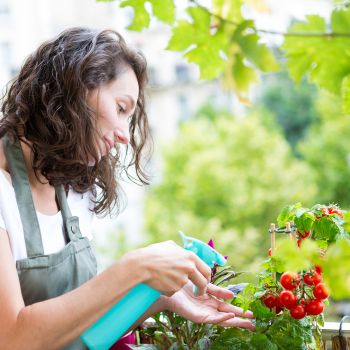
Balcony Kitchen Garden Ideas
Irrespective of the size of your balcony, setting up your vegetable or herb kitchen garden is possible. You can grow radishes, lettuce, tomatoes, strawberries, etc. Follow our tips to harvest your plantations and get started. You can save time by buying beautiful tomato plants, lettuce, and zucchini ready to transplant. For radishes, carrots, and spinach, seeding is unavoidable.
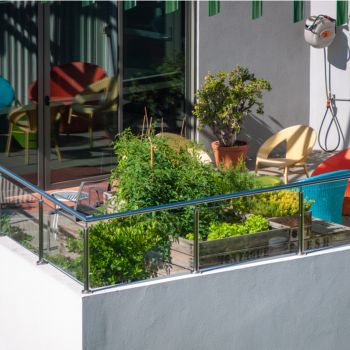
Herb plants – thyme, tarragon or chives are sold in large pots at garden centres or plant nurseries. You can buy strawberries, tomatoes, cherries or chilli peppers plants that are already covered with fresh fruits. Although they are more expensive, it allows you to harvest immediately.
With the appropriate sunlight and care, you can grow most vegetables and herbs in your balcony kitchen garden. You can place multiple platforms to hold various planters in line. This way, you can accommodate more plants in a much more compact space.
Use your imagination and take advantage of railings and vertical space. This will allow you to grow small vegetables, salad leaves, and aromatics.
Indoor Kitchen Garden Ideas
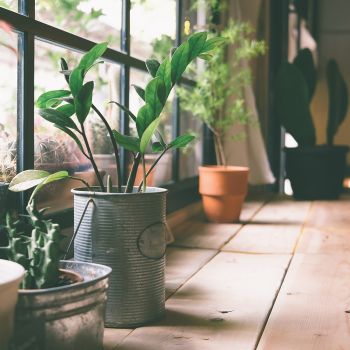
If you reside in a metro city or don’t have any access to outdoor space, then the indoor kitchen garden works well for you. Indoor kitchen gardens require less maintenance and can be easily taken care of. As a bonus, you don’t need to rush all the pots inside every time there’s heavy rainfall or a storm. Herbs and microgreens can be easily planted in small pots and kept on corner shelves or window sills. Keep a watering schedule to ensure that your plants don’t end up dry for a long time. Ensure that the plants receive plenty of sunlight through the windows.
Rooftop Kitchen Garden Ideas
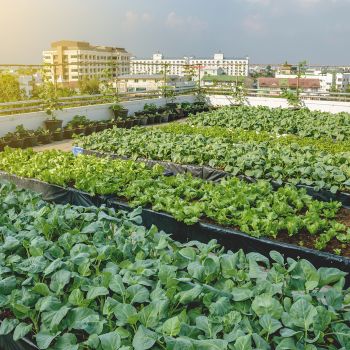
Rooftops are spacious, they get enough sunlight and are ideal for a small kitchen garden. Depending on the geographical location and space available, you can set up a kitchen garden in several ways. Placing raised beds or planters around the area is an ideal time-saving option that is rather convenient for people. You can also construct the entire roof space accordingly and leave patches of soil on the floor to plant vegetables as per your kitchen gardening ideas.
Vertical Kitchen Garden
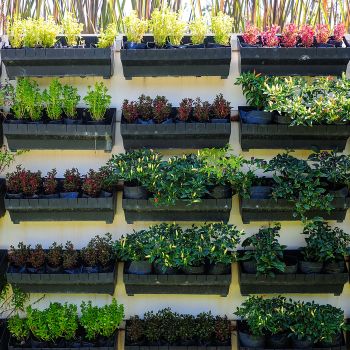
When you don’t have the extra square feet needed for the kitchen garden in your home, utilise the vertical space instead. Vertical gardening has emerged as a trend in these past few years due to the lack of space in metro cities. However, with vertical gardening, we cannot use the same criteria that are used for cultivation in the classic mode.
Strategically placing the plants is a very important part of determining the success of the vertical garden, it is useless if you buy suitable plants and their placement is not adequate. Take into account the shape and size of the adult plants so that they do not block each other. Does it grow straight up, like mint and rosemary? Does it tend to spread out to the sides, like lettuce? Does it fall over time, like nasturtiums or chives? All this must be taken into account so that they do not cover each other.
Surely you will have areas of the vertical garden that will receive more hours of direct light than others, take advantage of it. Place those plants that are more demanding of light in that area. Also, placing the plants that enjoy drier substrates in the upper part, where the flow of water will be less, and those who like the wetter substrate at the bottom is the right choice for your vertical kitchen garden.
Choosing the right plants is also essential to guarantee the success of your vertical kitchen garden. This factor is as important as knowing how to place them strategically.
A fairly common mistake is not being generous with the amount of substrate per plant. In the case of modular kitchen gardens or felt bags, each unit or bag should be treated as if they were individual pots. Generally, the capacity of the pre-made vertical gardens is 2-3 litres per plant, so we are free to plant salad leaves, aromatic and small horticultural’s, like garlic, onions and beets. And talking about strawberries, ah, you can have a wall full of these babies if you feel like it.
For vertical kitchen gardens, it is better to not grow tomatoes, beans or peppers. They are only seen to thrive in professional hydroponic vertical gardens, or with large substrate capacity, which requires a much more expensive and professional installation.
Hydroponic Kitchen Garden Ideas
Hydroponic gardening is the way of growing plants without any soil or compost. You can grow vegetables, fruits or herbs indoors all year round, regardless of seasonal changes. In this system, nutrients required for plant growth are dissolved in water from where the plant roots can absorb them. Hydroponic kitchen gardens require less space and are highly efficient. You can create your version of DIY hydroponic kitchen gardens with minimal equipment. Here, plastic bottles with their side portions are cut to act as planters. You can easily grow herbs like Oregano, Basil, Stevia etc. and vegetables like Lettuce, Celery, Spinach etc. in your hydroponic kitchen garden.
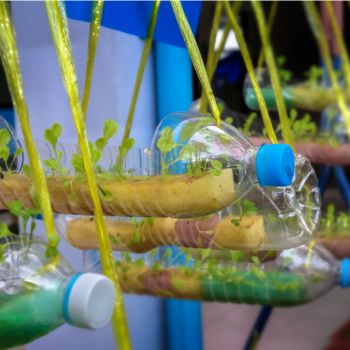
Backyard Kitchen Garden Ideas
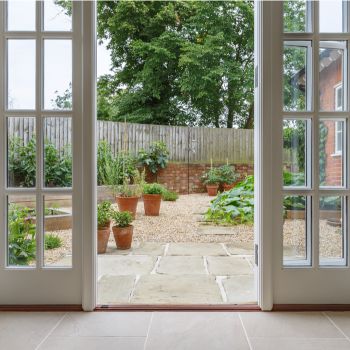
You can hang basket pots in the backyard to create a beautiful and organic kitchen garden in your home. Even though hanging gardens usually are chosen to grow flowers; vegetables and herbs can very well grow in them as well. All you require is a sturdy netting system, reliable hooks, and baskets that act as planters to create a weave of pots. In the bottom area, you can easily place raised beds or container plants. Such kitchen gardens also catch the visitor’s eye and add a vibrant element to your backyard. One major issue to watch for is t the plant you’re growing should not require a lot of soil as the weight alone can bring the entire row of baskets down. You can grow tomatoes, peas, lettuce, parsley etc. easily in such types of gardens.
Front Yard Kitchen Garden Ideas
If what you want is to create a more recharged environment around your house, you must place a large amount of vegetation, right up to the front door of our house. However, when it comes to setting up your kitchen garden in the front yard, you must differentiate the spaces in which you are going to cultivate.
Garden or patio?
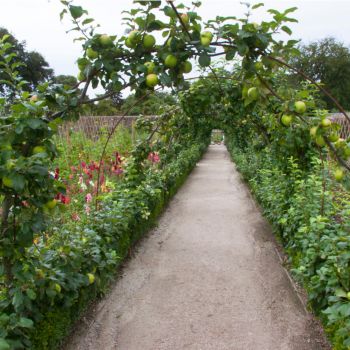
The difference in size is what sets the tone. Thus, growing cabbages in a garden are not the same as growing it on a patio. Most of the vegetables that you can grow in a garden can also be easily grown on a patio, with due respect to the size of the plant. You should always go for the baby version of the vegetables when planting on a patio.
Let’s not forget to use plants of different shades to give it a more striking touch. Along with tomatoes, you can plant onions, cabbage and carrots. In case you are planting potatoes, combine them with corn, cabbage, peas or beans.
Urban Kitchen Garden Ideas
The conservation of biodiversity should not be limited to natural parks and virgin areas, it should be incorporated into all our daily lives Cities are not bubbles isolated from our environment, they are a part of it. Hence with urban kitchen garden ideas, we intend to make them green and more respectful of the environment – and incidentally, more livable and pleasant.
Your garden vegetation can also become an essential part of a strategy to reduce urban pollution. By increasing the green areas of our city, we contribute to reducing the “heat island”, typical of cities, and the elimination of CO2- the most important greenhouse gas, and other atmospheric pollutants.
If you do not have a garden, a good option is to opt for cultivation tables; which allow you to have your kitchen garden, on the terrace, patio or even inside the house.
These tables are watertight, made of steel and available in various sizes. You can grow vegetation, both indoors and outdoors because they do not let the water escape.
With a hook and adjustable straps, you can also hold boxes of very varied sizes to grow your urban kitchen garden and thus take advantage of every inch of space available. And if the box you use is recycled, extra points!
If you don’t know where to start or want to have everything you need to grow on hand and easily, there are several grow kits available on the market.
Grow Bags Kitchen Garden
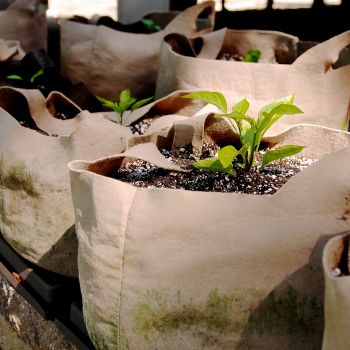
If you don’t have a lot to spend on fancy pots, pallets or raised beds, you can simply start your kitchen garden in grow bags as well. They might not add to the glamour of your garden, but they are quite functional and reusable. After each season, you can change the soil, wash these bags out and replant the seeds. Grow bags also retain more moisture at the bottom, thus providing more nutrients to the plants.
Window Kitchen Garden/Orchard Window
A kitchen garden window is a three-dimensional window that extends from the house. These windows can provide a cosy corner for plants such as flowers and herbs.

The kitchen window garden is both attractive and useful. The greatest use of this garden is to grow various herbs that may be used in cooking, as they are close by and simple to utilize. Garlic, pepper, lemons, sprouts, and mushrooms are some fresh and healthy plants that may be cultivated in your kitchen window garden. They are small enough to put in a vegetable garden and are frequently used in many cuisines.
The process of nature growing in your kitchen window always catches the eye, but if you still want to add more decorative effects to it here are some ideas:
- Trinkets can give individuality to the window when placed between the pots.
- The incorporation of objects hanging from the ceiling like wind chimes, suspended plants and other suspended components provide a different level of elegance to the window.
- The kitchen window garden may look much more planned by painting the pots and using various pot sizes.
Organic Kitchen Garden Ideas
The secret of an organic kitchen garden is not in the design of the garden but its care and its system.
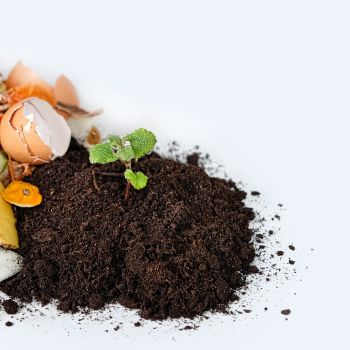
Let’s begin with the preparation of the land. All you have to do is clean the ground, remove weeds, stones and glass, and then establish the division of cultivation areas. Make a margin of 30 and 40 cm between one and the other, so that you can walk between them.
Now integrate the clods of earth with natural soil, and then level the area with a rake. Use organic fertilizers to enrich the soil.
Good organic compost can be created with organic remains such as eggshells, potato remains, manure, ashes and fruit remain. Get a local sowing calendar to know when to sow which vegetable or herb.
At the time of sowing, there are two alternatives: by seedlings, or directly throwing the seeds in the ground. If sowing is chosen by seedlings, the soil must be placed in small containers such as for a few seeds. You can use egg boxes which are also biodegradable. You can use the rolls of toilet paper or kitchen paper and put soil on it, mixed with hummus or compost and a little sand or coconut fibre to have good drainage.
Kitchen Herb Garden
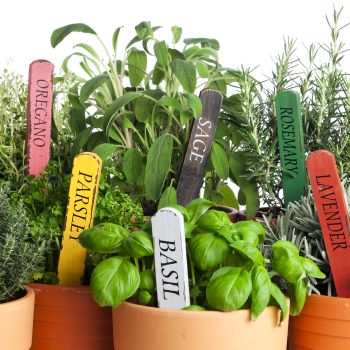
Finding fresh coriander, mint or basil can be a tough task. Even the best of batches in grocery stores could be a few days old. An herb garden for your kitchen is an ideal option that isn’t as tough as it sounds. Plant some coriander seeds in a small pot and you can enjoy the fresh herb a few days later. Similarly, other herbs that can thrive in a kitchen garden are Basil, Oregano, Parsley, Chives, Rosemary, Sage, Thyme etc.
Kitchen Garden Plants for Spring
Whether you have a small garden or some pots on the balcony, you can easily grow the below-mentioned vegetables this spring. Some of them can be sown directly, such as carrots or spinach, while for others you will have to prepare a seedbed to prepare the seedlings.
- Cucumbers: As it is difficult to transplant, it is better to sow directly in a pot. It is very sensitive to cold, so you should avoid temperatures below 15ºC. The seeds take 8 to 10 days to germinate and you can collect them in 10 weeks. Watering of the plant must be frequent and you need a container of a minimum of 15 litres.
- Spinach: These seeds will germinate in 10 or 12 days; they are resistant to cold and a staggering collection of leaves can be made in 2-3 months. You can take care of this plant by light and frequent watering, without flooding; a container of a minimum of 3 litres.
- Tomato: Sow in a seedbed, peat pots. It takes 5-10 for the seeds to germinate and the optimum temperature required for it is 20ºC. Usually transplanted when they have three or four true leaves, tomatoes can be collected between 4 and 9 months, depending on the cycle. The waterings must be spaced and abundant.
- Pepper: Sow in peat pots and transplant when they are 12-15 centimetres. They germinate in 3-6 days and are harvested in 5-7 months. Irrigation must be frequent, but not very abundant and requires a minimum content of 14 litres.
Winter Kitchen Garden Vegetables
The winter harvest can be very diverse and varied. Although the orchards in winter are usually quite empty, if planned well, can get you some of your favourite vegetables and greens. For example:
- Turnip daikon: It is an elongated white turnip that comes from Japan. This kind of tunip is very good for improving the function of the liver.
- Carrots: The carrot is one of the most common vegetables that we can have in our kitchen gardens for winters. It belongs to the Umbelliferae family.
- Brussels sprouts: These are cabbages widely used to make different cooking recipes. When harvesting them, you have to take them one by one, and it should be noted that the smallest ones are known to be the tastiest.
Summer Vegetables for Kitchen Garden
Consumption of fresh, seasonal vegetables can help you cope with skin allergies, dehydration, and vitamin deficiency in summers. With plenty of sunlight and increased soil temperature, you can easily grow many vegetables in your kitchen garden. Some of the common summer vegetables are Brinjal, Pumpkin, Bottle Gourd, White Onions, and Okra.
Grow what you eat! It sounds like a good health mantra to follow but at the same time seems like a lot of money and hassle. This is what most people think of when they hear about kitchen gardens, but in reality, this is not the case.
A kitchen garden is convenient and sustainable and you can set your budget according to your convenience and needs. Depending on the space available, you can easily manage several plants and grow vegetables, fruits or herbs for your daily consumption. Not only will a kitchen garden supply you with fresh, organic ingredients, but will also save a lot of money spent in farmers’ markets or grocery stores.
Kitchen gardens are an emerging trend globally. People are more focused on mindful eating and healthier ingredients than ever. Kitchen gardens also add to the look of your house and impart a renaissance feel to the space. You can choose from multiple kitchen garden designs, depending on the area available. If you are looking for a home with sufficient gardening space, contact the professionals at NoBroker. You will find multiple options and step-by-step aid, all for a minimal cost, just click the link below
FAQ’s
Ans. Hydroponic kitchen gardening does not use soil for the cultivation of plants. Instead, the nutrients are dissolved in water from where the plant roots absorb them. Common substitutes for soil are vermiculite, coconut fibre, sawdust, pumice etc.
Ans. Kitchen gardens can be grown throughout the year. However, early spring is an ideal time for starting a kitchen garden. After each season, you can bring the necessary changes to your garden.
Ans. Kitchen gardens don’t require high maintenance but do ensure that the selected space gets plenty of sunlight and that the soil is enriched with organic compost.
Ans. Minimum soil depth in raised bed kitchen gardens should be 6 to 8 inches.
Ans. You can grow fruits like cherry tomatoes, blackberries, raspberries, strawberries etc. in your kitchen garden.











